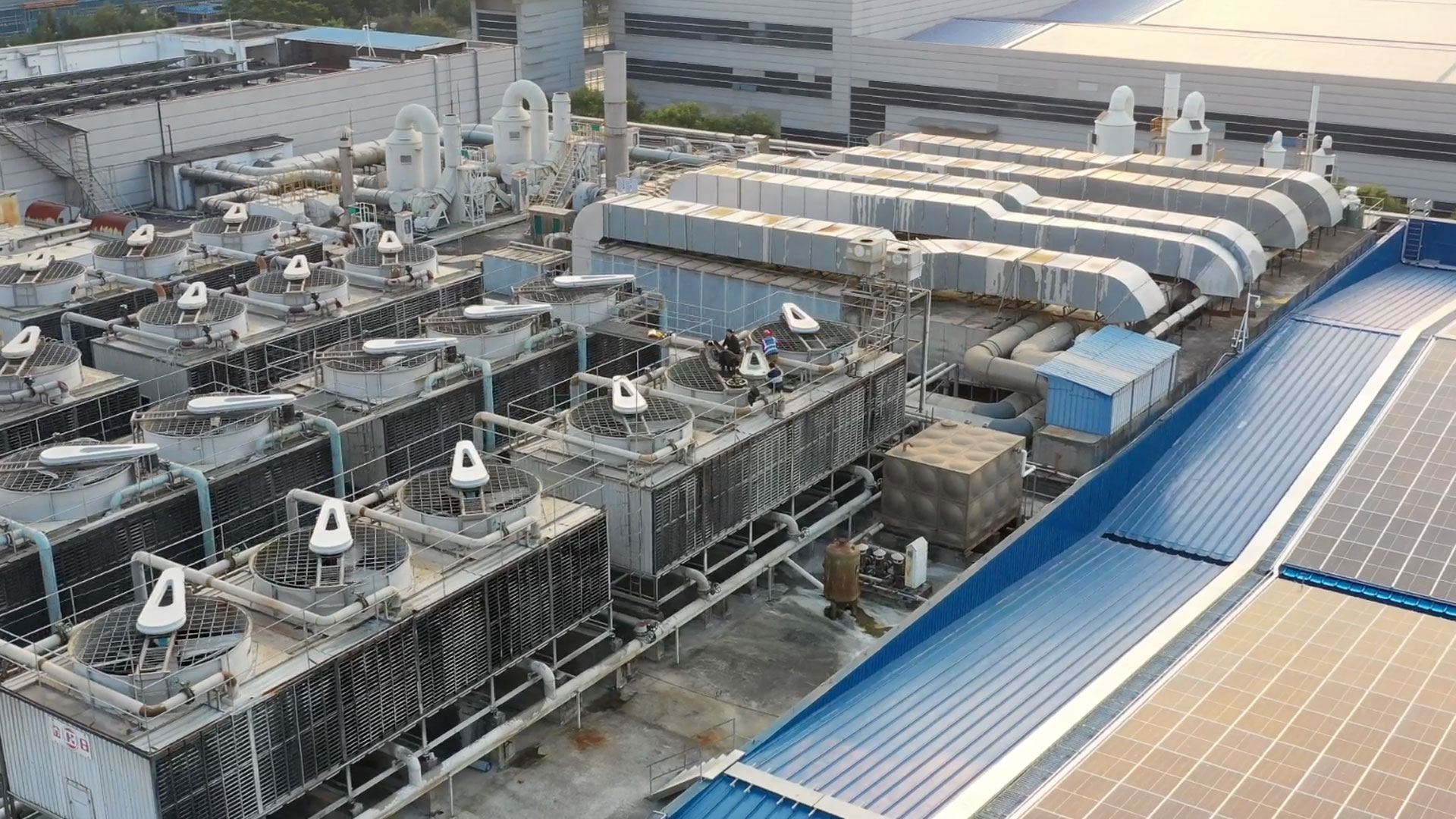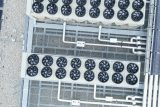How to Slash Your Energy Costs: A Guide for Energy-Intensive Industries
News
Posted by: IonicBlue
7 months ago
Energy-intensive industries like manufacturing, healthcare, and hospitality face rising pressure to reduce operational costs.
Reducing your business energy cost is one of the most effective ways to cut operating expenses. By reducing power usage, energy-intensive industries stand to save considerably. With enhanced energy efficiency and by replacing or retrofitting aging equipment, your enterprise can reap the benefits of lower and predictable utility costs.
For companies looking to reduce short- and long-term energy costs, adopting Energy-as-a-Service (EaaS) and infrastructure finance solutions is becoming a best practice. This approach allows organizations to implement energy-saving infrastructure and processes while unlocking innovation and cost savings.
EaaS is growing in popularity and – unlike the in-house corporate energy efficiency model – energy service contracts let companies transfer risks and upgrade facilities without the burden of upfront capital spending.
Common projects to reduce energy costs include:
- Central utility plants
- HVAC equipment upgrades
- Connected technologies
- On-site and purchased renewables
- Water management and recovery systems
- Reduced-energy conveying systems
- Energy Efficient Lighting through LED lighting and building envelope upgrades
- Fire suppression and security systems
In this guide, we will provide an introductory look at the fundamentals of reducing business energy expenses, which are often aligned with corporate sustainability goals. We’ll also take a look at how infrastructure finance can pay for the energy transition, and how EaaS not only accelerates decarbonization programs but also preserves your capital.
Although success in each industry is nuanced, the following 10-step guide offers a broad framework to help any company take the first steps toward reducing energy consumption and lowering energy costs.
1. Formulate a Dedicated Energy Management Team
A cross-departmental energy management team helps ensure progress and accountability toward shared goals – namely reducing operating expenses and building a more sustainable enterprise.
Your internal team should include representatives from – at a minimum – your operations, finance, facilities management, and sustainability departments. By fostering collaboration, you can ensure your company’s energy-saving initiatives are aligned with broader business goals. Set clear, measurable objectives for the team, such as achieving a specific percentage of energy reduction within a defined timeframe.
2. Implement Comprehensive Energy Audits
A thorough energy audit is the cornerstone of any energy reduction strategy.
This audit should cover all aspects of your facility’s energy use, from lighting and mechanical systems to water usage and building envelope integrity. The goal is to identify inefficiencies and opportunities for improvement. Through this audit, your EaaS provider or internal team can help pinpoint areas to gain efficiency, eliminate waste, test the feasibility of renewable energy, and propose fixed-cost equipment upgrades.
3. Optimize Energy Use Through Smart Scheduling
We’re not just talking about remembering to turn off lights or installing a programmable thermostat. But it still sounds deceptively simple: Reduce energy costs by optimizing the schedule of your most energy-intensive operations. By running machinery and processes during non-peak hours, businesses can take advantage of lower energy rates.
But smart scheduling for large, complex plants or equipment requires sophisticated data analysis and an expert-level understanding of your rate structure.
Making this shift, however, is well worth it. The U.S. Department of Energy estimates commercial customer demand charges can be anywhere from 30% to 70% of a monthly electric bill.

4. Enhance Insulation and Building Envelope
A well-insulated building reduces the need for above-average heating and cooling, which can translate to substantial energy savings. Modern insulation materials and other techniques can drastically reduce the energy loss you typically find through walls, roofs, and windows.
Upgrading your building envelope to include high-performance insulation and energy-efficient windows, for example, will help maintain a consistent internal temperature. This in turn reduces the load on HVAC systems and may cut energy costs.
A cool roof with high thermal remittance offers benefits in the same way. Some modern roofing materials, for instance, stay 50 degrees cooler than conventional roofs and will save your facility a significant amount on air conditioning.
5. Upgrade to Energy-Efficient Equipment
When you invest in energy-efficient machinery and appliances, the assumption typically is that long-term cost savings will surpass initial capital costs. In most cases, this is true – provided the equipment is optimized.
It’s important that companies collect and analyze energy consumption data before investing in new equipment. This gives you a baseline against which to measure once you’ve implemented new equipment.
Deploying energy-efficient equipment is a central component of any corporate decarbonization program. However, it’s important that your internal team or EaaS provider conduct ongoing monitoring to ensure improved energy management over the long haul.

6. Leverage Renewable Energy Sources
On-site renewable energy solutions, such as solar panels or biomass generators, can significantly reduce your reliance on traditional energy sources.
Solar panels, for example, recuperate the cost of installation in just a few years, and any surplus energy can be sold back to the grid, providing an additional revenue stream. Conducting a feasibility study is essential to determine the best renewable energy solution for your facility.
Be sure to include energy storage solutions in your infrastructure plan. Used in conjunction with on-site renewables and smart scheduling, large-scale storage can further reduce your consumption during peak demand periods. This approach not only reduces reliance on the grid but also stabilizes energy costs by avoiding peak demand charges.
7. Integrate Advanced Energy Management Software
Digital tools for real-time energy monitoring and optimization can be game-changers for your bottom line.
Advanced energy management software offers features like automated usage reports, predictive maintenance alerts, and real-time consumption tracking. By leveraging these tools, businesses can identify inefficiencies and take corrective actions promptly.
Before implementing advanced monitoring, account for all energy use in your energy audit and check for software compatibility. Then determine how managers and efficiency leads will get real-time information and make decisions from advanced energy management software data.
8. Regular Maintenance of Energy Systems
Neglected equipment can become energy hogs, consuming more power than necessary. Maintenance – or lack thereof – can have an outsized effect on your utility costs, considering that mechanical and electrical systems use approximately 75% of building energy.
To address unnecessary energy costs, implement a regular maintenance schedule that includes checks and updates to all major systems to prevent energy waste and prolong the lifespan of your equipment.
This is yet another area where EaaS has an advantage. An energy service agreement can, for instance, include all of your operations and maintenance expenses. This can wipe out your deferred maintenance and avoid future expenses on end-of-life-cycle replacement.
9. Explore Innovative Financing Options for Energy Projects
Innovative financing, “pay as you go,” and fixed-payment options make large-scale energy efficiency projects more accessible. In many cases, the EaaS model delivers no upfront costs and no need to increase operating expenses either. This works by installing high-efficiency equipment – paid for through the energy savings it generates.
Energy Service Agreements (ESAs) may include off-balance sheet financing mechanisms or tax-exempt lease purchase agreements. A range of flexible financial structures and tax benefits exist to help companies boost valuation and defray capital expenses.

10. Choose An End-to-End Solution
Selecting an EaaS provider with experience in design, implementation, and financing will save you time and money as you work to reduce energy costs.
Rather than your internal team sourcing through multiple vendors, EaaS is a single strategic investment. Acting as your own project manager assumes all risks while working with an EaaS provider transfers risks and introduces budget certainty.
What’s more, instead of working through all the steps we provided in this guide, you can take a single step by contracting with an energy-as-a-service company that will not only provide turnkey solutions but will also fully optimize your infrastructure financing.
IonicBlue is an industry leader in performance-based energy efficiency. As a joint venture of Johnson Controls and Apollo Funds, we combine world-renowned building technology with strategic capital. Our industry expertise drives innovation and reduces operating expenses for customers while speeding up progress on carbon reduction goals.
To learn more about how IonicBlue can help you reduce energy costs and achieve your sustainability objectives, explore our Energy-as-a-Service or contact us for a free consultation.



